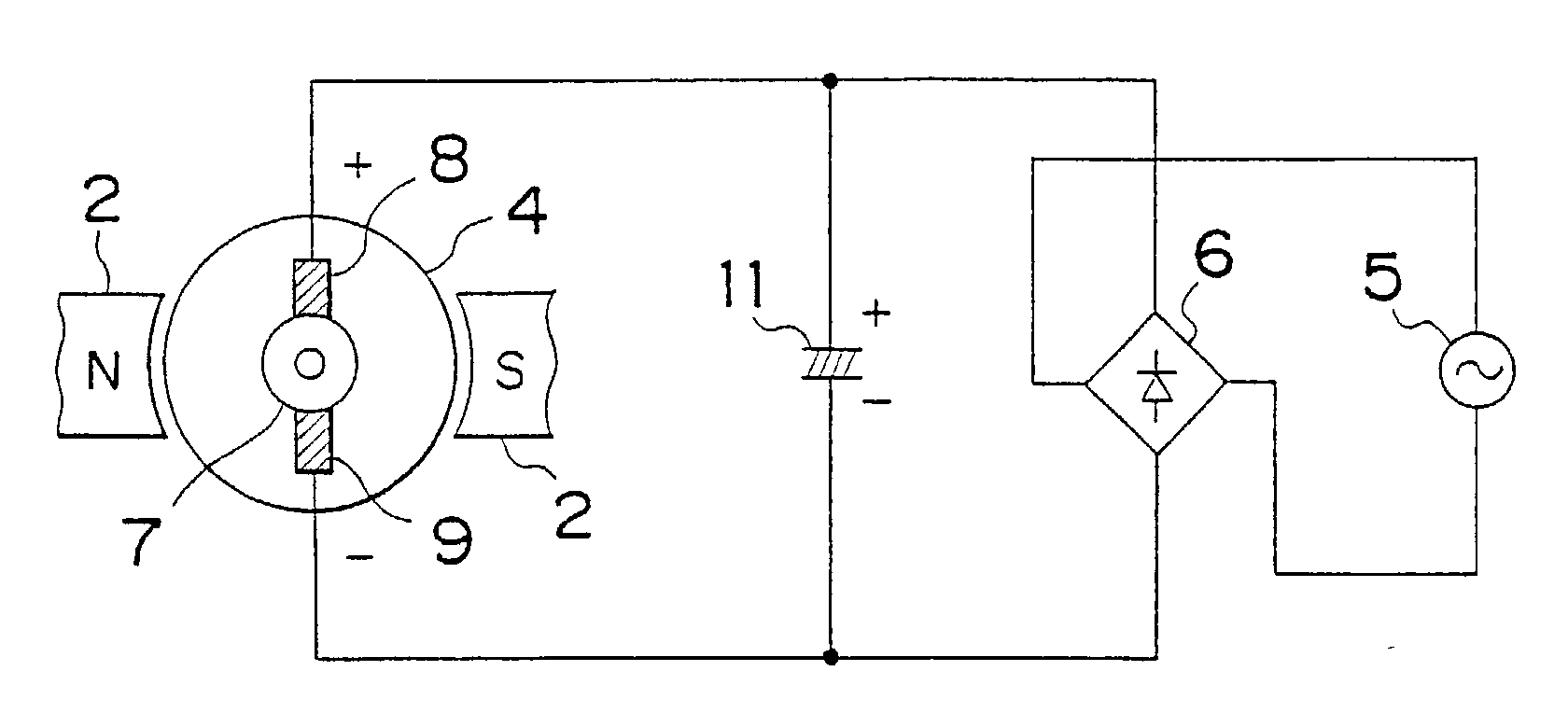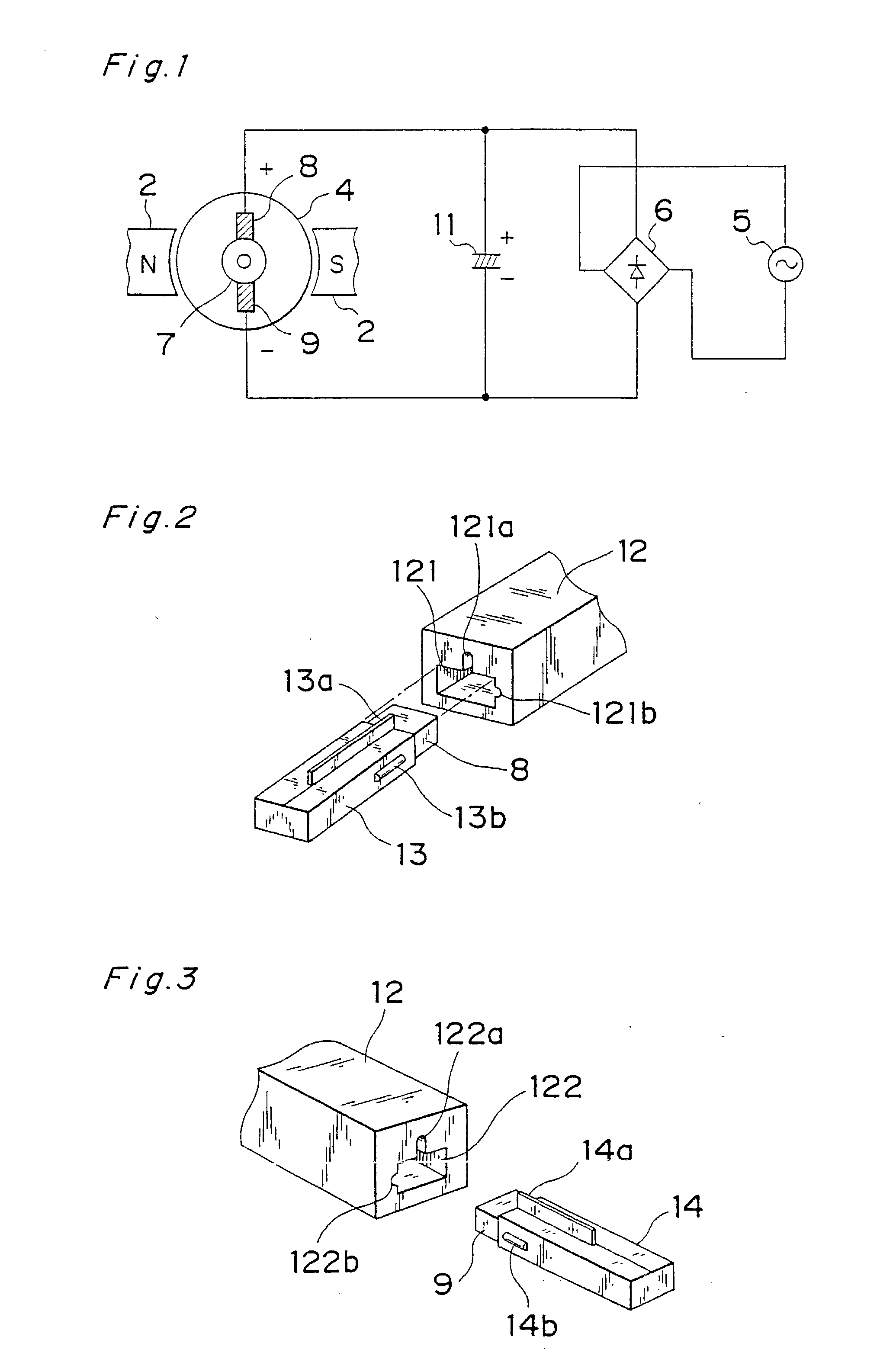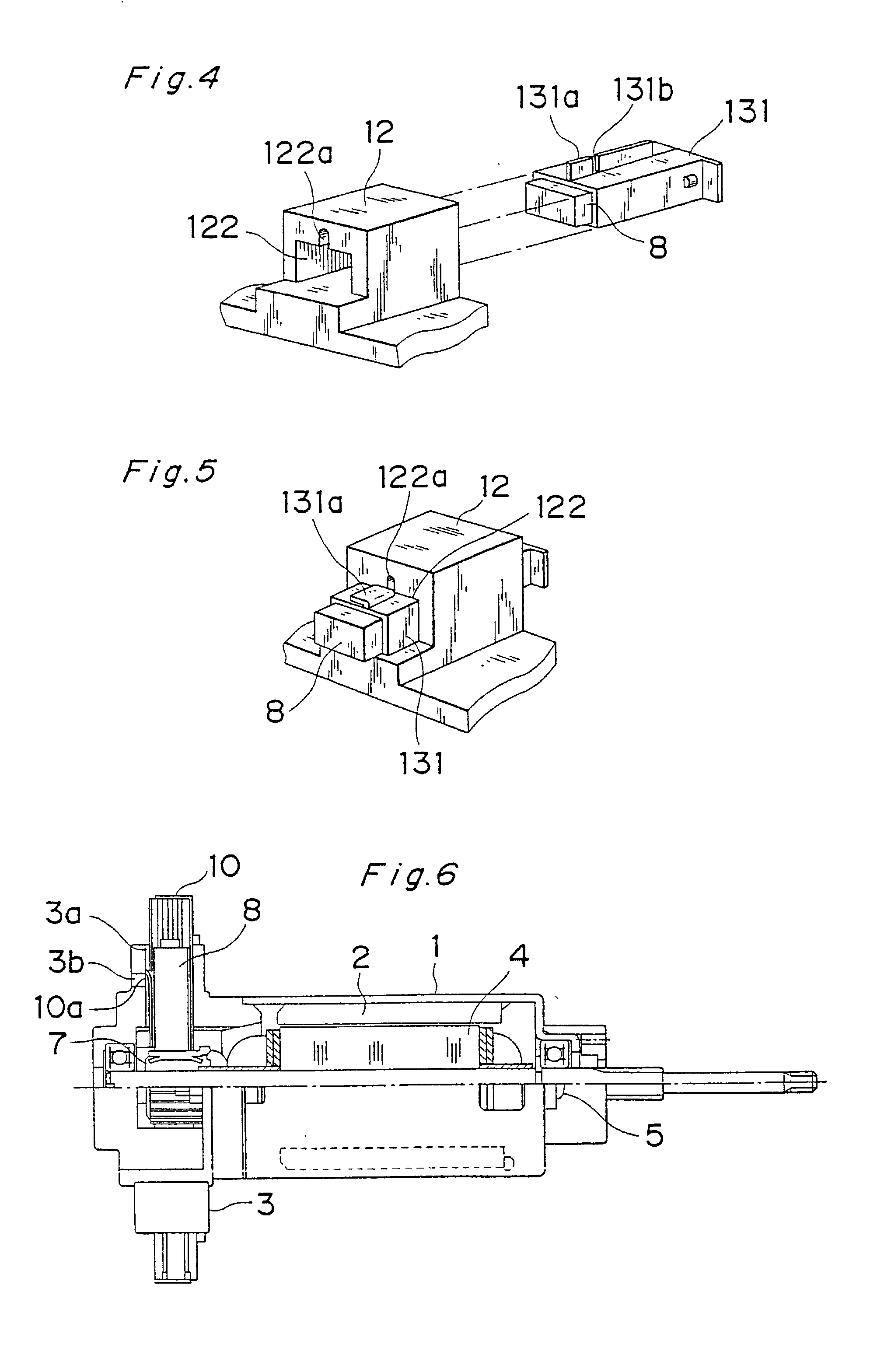Direct current commutator motor
a commutator motor and direct current technology, applied in current collectors, dynamo-electric components, electromagnetic interference suppression, etc., can solve the problems of reduced service life, unstable rectification, and inability to secure sufficient lifetim
- Summary
- Abstract
- Description
- Claims
- Application Information
AI Technical Summary
Benefits of technology
Problems solved by technology
Method used
Image
Examples
first embodiment
[0028] (First Embodiment)
[0029] Referring to FIG. 1, reference numeral 5 represents an alternating current power source; reference numeral 6 represents a rectifier for full-wave rectifying an output from an alternating current power source and converting it into a pulsating current; reference numeral 8 represents a plus-side carbon brush; reference numeral 9 represents a minus-side metal-mixed graphite brush; and reference numeral 7 represents a commutator slidably engaged with the brushes and operable to selectively switching an electric current to be supplied to a rotor wire winding depending on the angular position thereof. Reference numeral 4 represents a rotor having the rotor wire winding (not shown) mounted therearound and to which an electric power is supplied with the electric current selected from commutator pieces. Reference numeral 2 represents a magnet built in a frame for generating an electromagnetic force in cooperation with the electric current flowing across the ro...
second embodiment
[0031] (Second Embodiment)
[0032] Referring now to FIGS. 2 and 3, reference numeral 13 represents a plus-side specials tube for receiving the plus-side brush 8; reference numeral 13a represents a first projection provided on the specials tube 13; and reference numeral 13b represents a second projection provided on the specials tube 13 and positioned at a location spaced 90.degree. from the first projection 13a in a counterclockwise direction as viewed from a direction of insertion of the plus-side brush 8. Reference numeral 14 represents a minus-side specials tube for receiving the minus-side brush 9; reference numeral 14a represents a first projection provided on the specials tube 14; and reference numeral 14b represents a second projection provided on the specials tube 14 and positioned at a location spaced 90.degree. from the second projection 14a in a clockwise direction as viewed from a direction of insertion of the minus-side brush 9.
[0033] Reference numeral 12 represents a bra...
third embodiment
[0036] (Third Embodiment)
[0037] Referring to FIGS. 4 and 5, reference numeral 131 represents a specials tube for slidably receiving the brush 8; reference numeral 131a represents a bendable portion of a tab provided on a side surface of the specials tube 131; reference numeral 131b represents a crevice separating the bendable portion 131a from the rest of the tab; reference numeral 12 represents a bracket made of a thermosetting resin; reference numeral 122 represents an insertion hole defined in the bracket 12 for receiving the specials tube 131; and reference numeral 122a represents a longitudinal groove defined in the bracket 12 in communication with the insertion hole 122 for accommodating the tab on the specials tube 131 with a slight gap formed therebetween and so sized and so configured as to permit the bendable portion 131a to be exposed to the outside.
[0038] According to the third embodiment, after the specials tube 131 has been inserted into the insertion hole 122, the ben...
PUM
 Login to View More
Login to View More Abstract
Description
Claims
Application Information
 Login to View More
Login to View More - R&D
- Intellectual Property
- Life Sciences
- Materials
- Tech Scout
- Unparalleled Data Quality
- Higher Quality Content
- 60% Fewer Hallucinations
Browse by: Latest US Patents, China's latest patents, Technical Efficacy Thesaurus, Application Domain, Technology Topic, Popular Technical Reports.
© 2025 PatSnap. All rights reserved.Legal|Privacy policy|Modern Slavery Act Transparency Statement|Sitemap|About US| Contact US: help@patsnap.com



